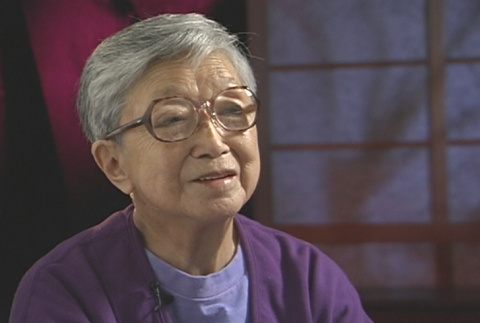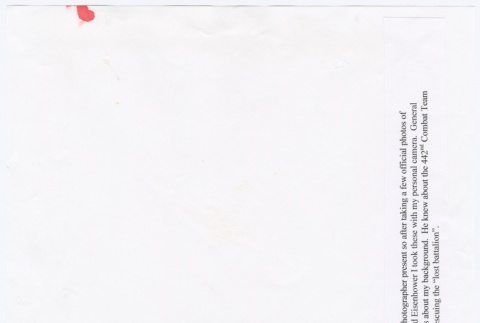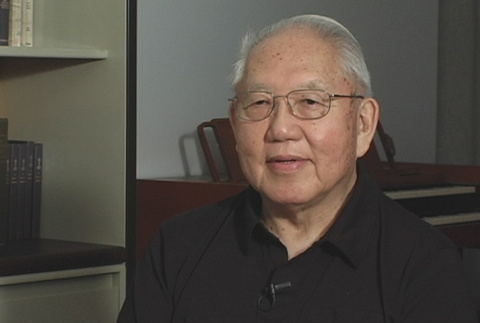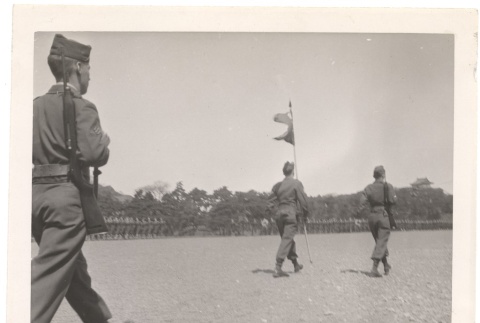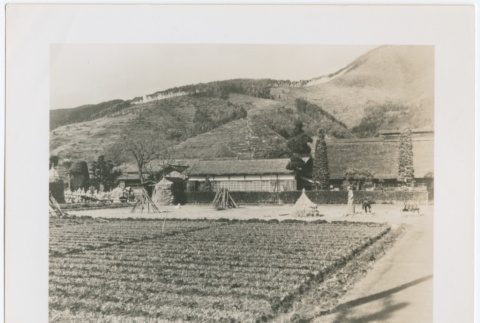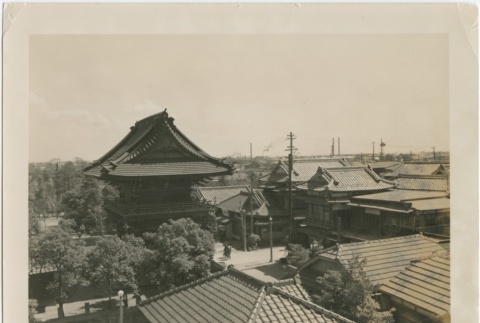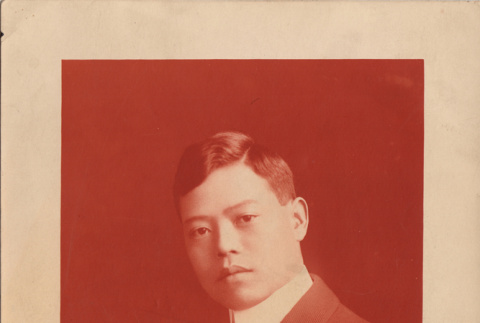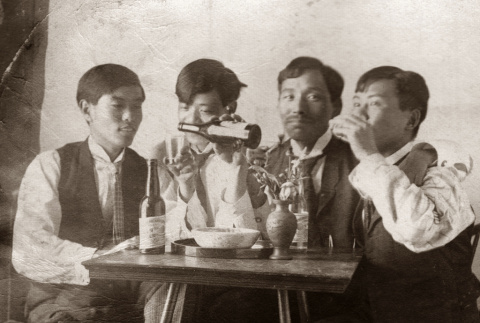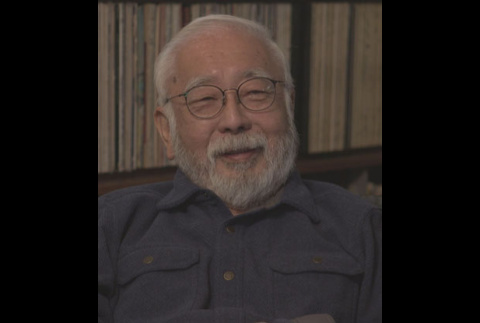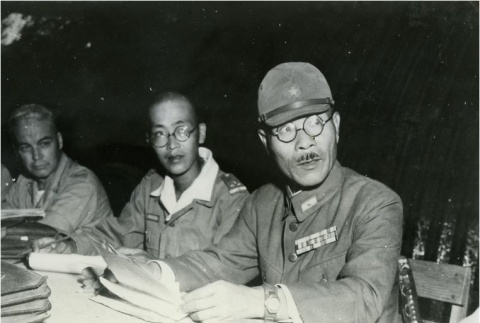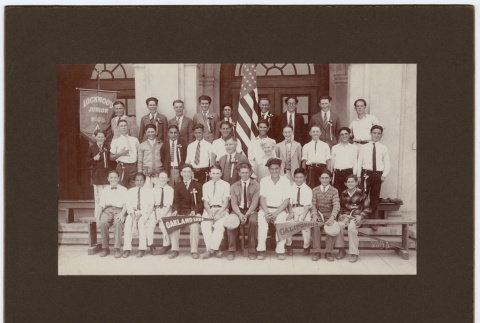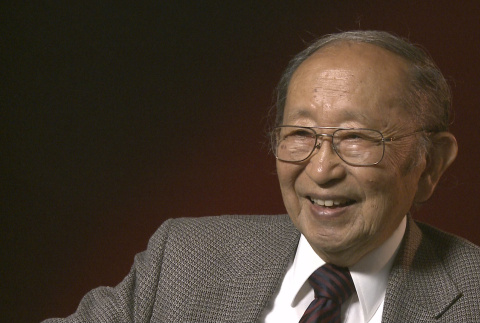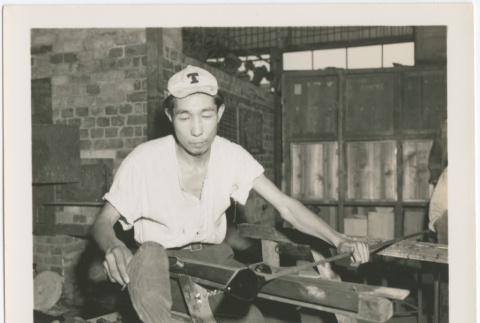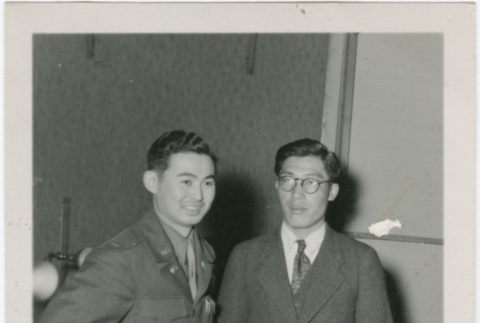9472 items
9472 items
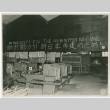
img
Workfloor of a factory showing the following writing on the wall: "Do Your Best! For the New Nippon Revival" (ddr-densho-299-37)
Caption on reverse: "FEC-47-75959. 17 June 47 / E.S.S. project: / Sign in the Hitachi Seiko Kaish- / a Ltd. machine tool plant, Chiba / Prefecture, Tokyo, Japan. This / factory is not currently slated for / reparations. / Photographer - Kondis / Photograph by U.S. Army Signal Corps."
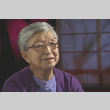
vh
Yukiko Miyake Interview (ddr-densho-1000-49)
Nisei female. Born July 21, 1910, in Seattle, Washington. Spent prewar childhood in Seattle's Nihonmachi, raised by her maternal grandmother. Married Henry Miyake, an Issei, photographer and owner of Takano Studio. Incarcerated at Puyallup Assembly Center, Washington, and Minidoka concentration camp, Idaho.
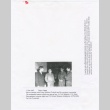
img
Prime Minister Yoshida dicussing rumors of resignation with some U.S. army troops (ddr-densho-299-188)
Two captions. Bottom side caption: "17 Jan 1947 Tokyo, Japan / Shown chatting with Prime Minister Yoshida and his secretary concerning / The resignation rumors which now prevail are: Lt. Ted Akimoto, U.S. Army / Photographer (extreme right) and T/4 Robert Shintani, Interpreter, ATIS, GHQ, / Far East Command." Right hand side caption: "I was the …

vh
Robert A. Nakamura Interview Segment 16 (ddr-densho-1003-4-16)
Working as a magazine photographer
This material is based upon work assisted by a grant from the Department of the Interior, National Park Service. Any opinions, finding, and conclusions or recommendations expressed in this material are those of the author(s) and do not necessarily reflect the views of the Department of the Interior.
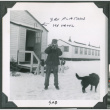
img
Edward Saburo "Sab" Ohashi -- 3rd platoon (ddr-densho-442-135)
Photograph of Edward Saburo "Sab" Ohashi standing in the snow taking a picture of the photographer with a dog looking on. Written along the top of the image is "3rd platoon / my home" in black ink. Written along the bottom is "Sab" in black ink.

img
ATIS Parade Outside NYK Building (ddr-one-2-387)
Black and white photographic print of three unidentified male military personnel marching in ATIS (army translation intelligence service) parade near NYK building in Tokyo away from photographer. Man in foreground is carrying a rifle on his shoulder, and man in center is holding a flag.

img
Japanese farm in the mountains (ddr-densho-299-62)
Caption on reverse: "WPA-46-69189. 25 Nov 46 / Japanese Farm: / This Japanese farm in the mountain range / of Yamanashi Prefecture is a good example / of the clean, well kept, and fully culti- / vated fields of the Japanese farm. / Photographer - Wheeler / Photograph by U.S. Army"

img
View of Adachi-ku (ddr-densho-299-30)
Caption on reverse: "FEC-49-1950. 25 March 49 / NRS Project: / View of village in Adachi-ku showing / extensive use of wood in construction / - domestic houses, shops, hotels and / religious structures. Close proximity / of structures a great fire hazard. / Photographer - Crowe / Photograph by U.S. Army."

img
Portrait of Mataichi Ozeki in red tone (ddr-ajah-6-823)
Caption below photo: Studio portrait of Mataichi Ozeki of Alameda, CA. He was a professional photographer. He enjoyed self portraits and red toning photos, making it possible this is another of his many self portraits. The soft pointed detachable collar became more popular around 1923.

img
Mataichi Ozeki with friends (ddr-ajah-6-800)
Caption below photo: Mataichi Ozeki (second from left) and friends have a drink and a good time. He was an Issei professional photographer and may have used a self timer to shoot this himself, as he was fond of doing. Circa 1907-1910s, Alameda, CA.

Narrator Frank T. Sata
Nisei male. Born March 20, 1933, in Los Angeles, California, where father worked as a photographer. During World War II, removed to the Santa Anita Assembly Center, California, and Jerome concentration camp, Arkansas, transferring to Gila River concentration camp, Arizona. After leaving camp, moved to Phoenix, Arizona. Moved to Guadalupe, California, living in a Buddhist church …

vh
Robert A. Nakamura Interview Segment 17 (ddr-densho-1003-4-17)
Working as a photographer for Charles Eames
This material is based upon work assisted by a grant from the Department of the Interior, National Park Service. Any opinions, finding, and conclusions or recommendations expressed in this material are those of the author(s) and do not necessarily reflect the views of the Department of the Interior.

img
Representatives at a negotiation session (ddr-densho-179-86)
Representatives making preliminary negotiations for the surrender of the Ryukyus Islands to the Commanding General of the Tenth Army. Civilian Interpreter Weri Takemura who once lived in Chicago,and Major General Toshiro Taga who represented Lieutenant General Toshiro Nomi, Japanese Commander of Sakishima. Photographer: Lieutenant Stauch.
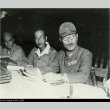
img
Representatives at a negotiation session (ddr-densho-179-88)
Major General Toshiro Taga, Representative of Lt. General Toshiro Nomi, Japanese Commander of Sakishima Group, making preliminary negotiations for the surrender of the Ryukyus Islands to the Commanding General of Tenth Army. The civilian interpreter is Weri Takamura who once lived in Chicago. Photographer: Lieutenant Strauch.

img
A barge in a flood control canal (ddr-densho-299-33)
Caption on reverse: "FEC-49-1869. 18 March 49 / NRS Project: / Flood control (public works) on a / drainage canal of the Ara River, not / far from the heart of Tokyo, which / is also used for navigation. River / barge used for transportation. / Photographer - Dunn / Photograph by U.S. Army."

img
Dyed and washed fabric drying (ddr-densho-299-21)
Caption on reverse: "FEC-49-1861. 18 March 49 / NRS Project: / Extensive use of wood - Japanese drying rack used for drying dyed / and washed materials. Standard length / of Japanese kimono material drying / is 6 yards and approximately 1 foot / wide. Tokyo. / Photographer - Dunn / Photograph by U.S. Army."
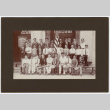
img
School photo in front of building (ddr-densho-329-599)
30 students and 2 teachers outside building, on steps and benches. One big American flag, a banner that reads Lockwood Junior High, and the front row holding Oakland 1926 and California pennants. Inscribed on back: "Kaneji Domoto H9" in green pencil. Printed on back: Hugo Weltz, Photographer
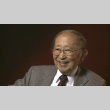
vh
Archie Miyatake Interview (ddr-densho-1000-299)
Nisei male. Born November 6, 1924, in Los Angeles, California. Grew up in Los Angeles, where father, renowned photographer Toyo Miyatake, established a photo studio. During World War II, was removed to the Manzanar concentration camp, California. In camp, father became the camp's photographer. After the war, Archie Miyatake returned to Los Angeles and eventually took …
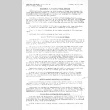
doc
Heart Mountain Sentinel Supplement Series 201 (May 30, 1944) (ddr-densho-97-423)
Selected article titles: "More Details of Tule Lake Shooting Announced" (p. 1), "Special 'Back' Gates to be Used by Hikers" (p. 1), "Unfilled Seasonal Job Offers to be Withdrawn" (p. 1), "Foreign Bonds and Property Must be Reported" (p. 1), "Photographer Will be in Center Every Wednesday" (p. 2).
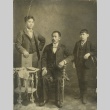
img
Portrait of father and son (ddr-densho-113-3)
This photo shows Masajiro Uyeda and his son Yoichi. Masajiro immigrated from Japan to Vancouver, BC in 1900 and eventually made his way to Rock Springs, Wyoming where he worked as a coal miner. His other sons joined him in 1912. (L to R): Photographer, Masajiro Uyeda, Yoichi Uyeda.

img
Japanese glassworker cools down a cocktail glass with a fan (ddr-densho-299-67)
Caption on reverse: "FEC-49-2057. 23 April 49 / Manufacturing glassware in Japan / After twisting, a Japanese worker at / the Hoya Glass Factory, Tokyo, Japan, / fans the stem of a cocktail glass to / cool it to prevent it from losing its / shape. / Photographer - Girard / Photograph by U.S. Army."

img
A woman cultivating crops in a bombed out area (ddr-densho-299-23)
Caption in reverse: "FEC-49-1946. 25 March 49 / NRS Project: / Utilization of every available space / for production of food crops, even / among the rubble of bombed ruins / and foundations. Woman with baby / on her back cultivating winter wheat / Tokyo metropolitan area. / Photographer - Crowe / Photograph by U.S. Army."
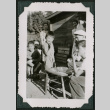
img
Candid family moment (ddr-densho-359-1033)
Photographer catches candid moment of the Nakata and Kawamoto familues. The boys ham it up for the camera while a man in the background points out the camera.From far left: Alice Kawamoto with Bob Kenji Nakata, Jeanette Otsuka, Don Nakata, Pauline Nakata, unidentified man pointing, Masaaki Nakata, Ken Nakata
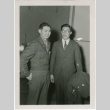
Collection
Theodore Akimoto Family Collection (ddr-densho-299)
The Theodore Akimoto Family Collection consists of materials from Theodore Akimoto's time with the 44nd Regimental Combat Team, Military Intelligence Service, 71st Signal Service Battalion, and Photo Division SCAP. The majority of the images document Ted Akimoto's time as a U.S. Army photographer during the occupation of Japan.
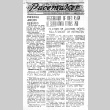
doc
Santa Anita Pacemaker Vol. I No. 3 (April 28, 1942) (ddr-densho-146-2)
Selected article titles: "Postal Rules Issued" (p. 1), "Regulations Announced for Package Delivery" (p. 1), "Registration of Men 45-64 at Santa Anita Totals 760. Number of Japanese Signed Falls Short of Estimates" (p. 1), "New Mess Hall Open This Week" (p. 3), "Photographer Takes Pictures at Center" (p. 4).

